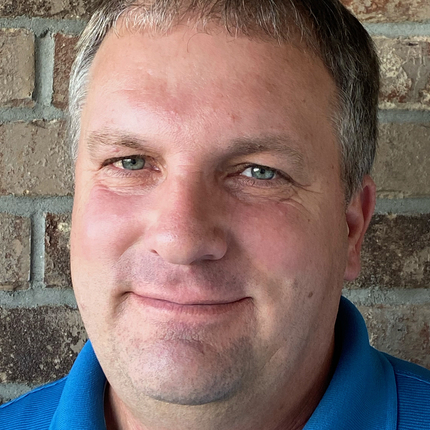By Andrea Hartman, former staff member. This story appeared in the Midwest Messenger on Oct. 24.
“The less work you do today, the more work there is for the future.”
It’s a lesson Tim Wallinger learned when he was a boy on his father’s farm, heading out to chop thistles whether he wanted to or not. While not the most fun or flashy chore for a farm kid to do, it was a lesson in stewardship Tim took with him.
Tim worked with his father for 20 years on their ranch near Stuart, Nebraska, learning about how good stewardship is often a key factor in staying profitable. Today, he has transitioned to working off the farm, but he carries those lessons with him and takes pride in the quality of his pasture. Tim now rents out his land to a neighbor to run cattle on, and knows that if the cedars and thistles get away from him, the pasture would be less profitable for both himself and the renter.
Tim’s acres are divided into four pastures, with a tank for water in the middle of each quarter. The timing of the rotational grazing schedule is an important part in preventing overgrazing, as one of the pastures is true Sandhill soil that can only support a few days of grazing, while the other half is sub-irrigated grass that can support several weeks.
After noticing his good stewardship, a friend recommended that Tim look into the Conservation Stewardship Program (CSP). CSP helps farmers and ranchers enhance conservation on their operations and is provided by the Natural Resources Conservation Service (NRCS.)
When he started his application, his biggest questions surrounded what the program would look like on his land, since the person who encouraged him to apply lived in a very different part of the county. But with the help of his NRCS technician, he drew up a five year plan for his land, with a particular focus on brush management and rotational grazing.
In Nebraska, the deadline to submit the initial paperwork for an application for CSP has been moved up to Nov. 20. This is a different timeline than years past, so producers interested in applying should contact their local NRCS office to set up an appointment as soon as possible.
Because good stewardship looks different depending on the needs of the land, popular CSP practices can vary widely across Nebraska. For row crop farmers, cover crops and extended crop rotations help build soil health. For ranchers, rotational grazing, brush management, and proper watering facilities prevent overgrazing and encourage plant diversity.
As a part of his brush management plan, every week throughout the summer, Tim goes through his pasture, following the cattle and searching for invasive plants, such as thistles, cedar trees, and willows. The shorter grass in the areas where the cattle have recently grazed often reveals little thistles that might be missed when the grass was knee high. This way, Tim explained, he gets a better kill on the invasive species that threaten the productivity of his pasture. The schedule of the rotational grazing means the cattle need to move more quickly off of the Sandhill pasture.
Seeing his pasture free of these pests is a source of pride for Tim, but he says that it’s not just cosmetic, rather “ hoping the land will be productive for a long time.” He explained that cattle can’t eat thistles and red cedars, so when these plants are allowed to spread across the pasture, it reduces the number of cattle who can graze.
“Your operation has to be so much bigger than it was in the past,” he said. “It’s easy to let the pasture get away from you because you don’t have time to do it, and there are some distant landowners who only collect the rent check. But you have to think about the future.”
To producers considering applying to conservation programs, such as CSP, Tim recommended, “Don’t be afraid to ask questions. See what’s out there and what fits in with what you’re doing. Being a better steward doesn’t have to mean overhauling your whole system.”
Applications are currently being accepted for CSP in Nebraska. Other state sign-ups vary. Contact your local NRCS office for more information.





